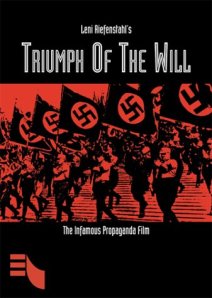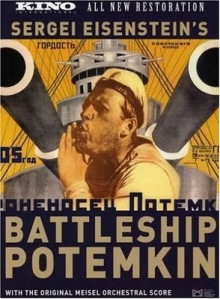“Triumph of the Will” by Leni Reifenstahl and “The Battleship Potemkin” by Sergei Eisenstein are two propaganda films which execute their job well in conveying their message across to their targeted audiences. However, both movies have very different ideologies where Einstein promoted communism whereas Reifenstahl publicized fascism. Also, it’s important to note that “The Battleship Potemkin” was an entirely fictional film which had the Soviet Union as its backdrop while “Triumph of the Will” chronicled the 1934 Nazi Party Congress in Nuremberg, Germany which was attended by more than 700,000 Nazi supporters. Although they have differing ideologies, there are a few elements that are common to both films namely crowds, uniforms and children. Now, I am going to compare how these three elements are treated by each director in their respective films.
In movies, generally, crowds typically represent the unity of people and both directors have cleverly made use of crowds to convey a message to audiences. In “Triumph of the Will”, this can be well illustrated in the opening sequence of the film where we are seen to be flying in the clouds on an airplane and shown the aerial view of the city Nuremberg which looked very peaceful and untouched by modernization. Then the scene cuts to large crowd of people cheering when the plane lands and Adolf Hitler is shown exiting the plane. All of these happen in the first 5 minutes of the film and there’s a reason why Riefenstahl has made it as such. Reifenstahl used crowds to show to audiences that Hitler has many supporters and even those who might not have agreed with Hitler’s ideologies, will feel threatened looking at such large crowd of followers. On the other hand, Eisenstein has used crowds rather differently. In the Odessa Steps sequence, the Tsarist soldiers were shown openly firing gun shots at a large crowd of innocent civilians. In that epic scene, we could see all hell’s running lose as people were running away to save their dear lives. We as audiences feel helpless watching such an inhumane act happening before our eyes and there’s nothing we can do to stop those evil soldiers! Hence, it can be concluded that crowds are used as a tool to instill fear in “Triumph of the Will” whereas in ” The Battleship Potemkin”, the helpless crowd evoke anger and rage within audiences.
Moving on, uniforms play a huge role in both movies and very well represent their respective propaganda. In “Triumph of the Will”, soldiers in their uniforms, farmers dressed in their farming costumes and people of various social classes are seen to be greeting Hitler. This shows that the Nazi’s ignore social statuses and regard everyone as equals. Also, in the camps where the soldiers live, they make a point not to wear uniforms because without uniforms, there won’t be ranks and a sort of “brotherhood” is formed. While uniforms were seen to promote equality in “Triumph of the Will”, it has quite the opposite purpose in “The Battleship Potemkin”. In the first part of the film, we could see clear division between the ruling class and the working class as sailors, captains and other crew members of the ship had their respective uniforms. Also, we could see that the working class experienced harsh working conditions as they were forced to eat meat that was infested with maggots. That particular scene agrees with Marx’s theory of Alienation where Karl Marx says that a worker under the capitalism system has no control over the conditions of his work as the owner decides the hours, environment, rules and procedures.
Last but not least, children were also used as a means of propaganda in both films. The Youth Rally scene in “Triumph of the Will” is the perfect example as it portrayed orderliness and Hitler’s ability to bring together such a huge crowd of young boys whom most people often perceive to be naughty and lack the ability to follow orders! It also showed the Germans that Hitler cared for the younger generation and he was fighting for their better quality of life. In comparison, children were used as victims of violence in “The Battleship Potemkin”. For example, there was a scene of a boy being trampled to death by the crowd at the Odessa Steps sequence. The close up shot on the boy’s face was really pitiful as he was in terrible pain and worse of all, he lost his life for no apparent reason! The director knows very well that the effect of the child’s death would be more powerful to audience as opposed to the death of an adult because children are often used in movies as they are thought to be pure, vulnerable and innocent.
All in all, Leni Reifenstahl and Sergei Eisenstein have very well fused the three elements that I have described into their respective movies and no doubt, it has resulted in the world’s greatest propaganda films.



You don’t really grapple with the “fictional” aspects of both films. Potemkin was based on an actual historical event — the 1905 rebellion on that battleship. Nuremburg was not a “real” event in many ways. The rally was staged to be filmed!
Your analysis of the crowds is also somewhat superficial. You don’t analyse WHY Eisenstein’s crowds had a different effect on the audience than LR’s.
Your analysis of the use of children is excellent.
6.5/8